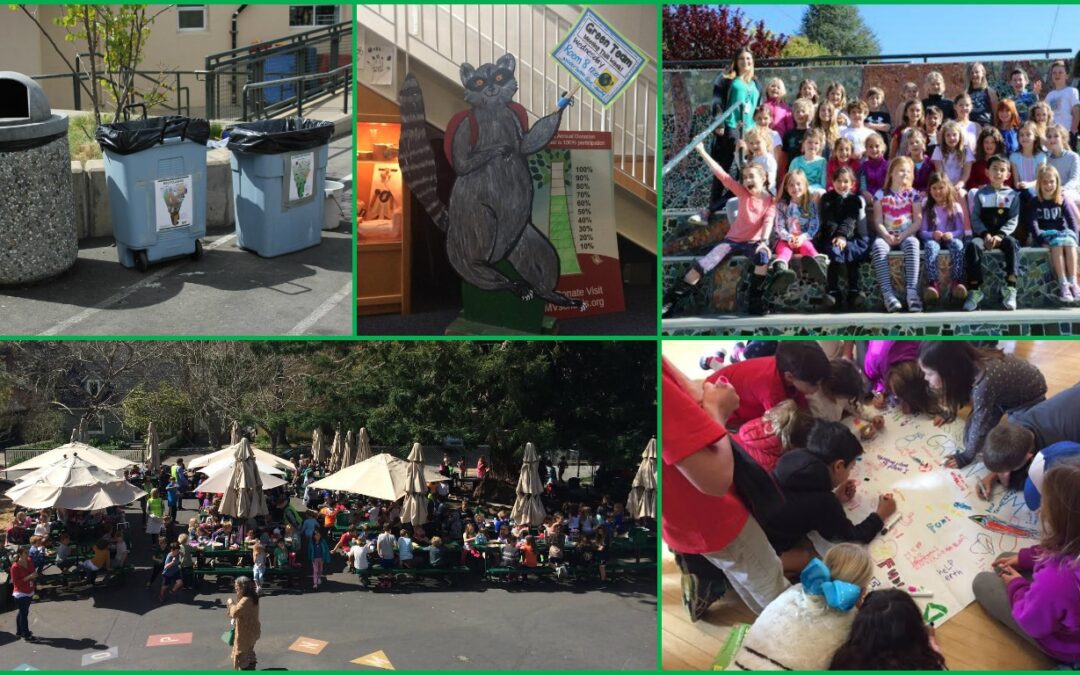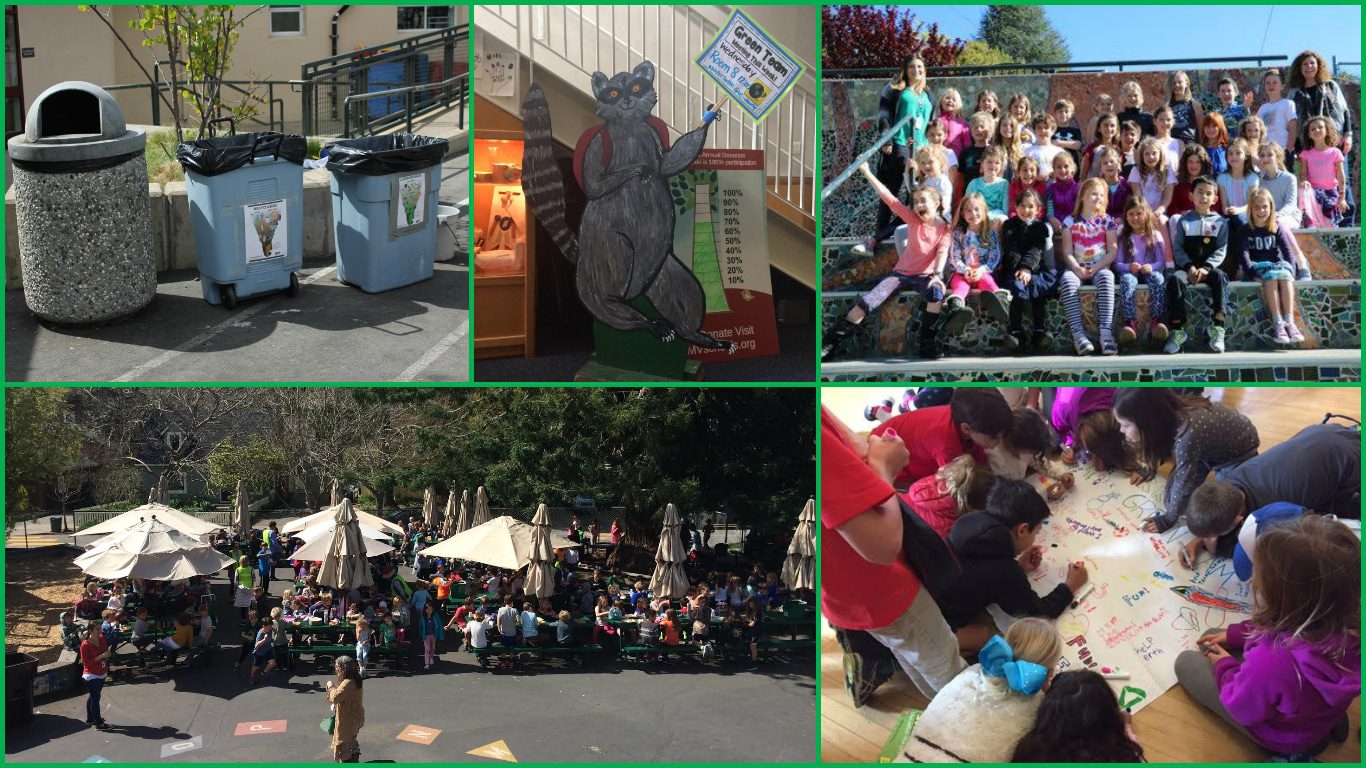That is not a coincidence.
Old Mill is eight months into its participation in Zero Waste Schools, a program from Zero Waste Marin, the countywide campaign to get to Zero Waste in Marin by 2025 through a multi-pronged effort that is driven largely by recycling and composting.
Deppong says that effort has manifested itself in special recycling and composting bins on campus, particularly in lunch areas and in restrooms, where recycling paper towels has proven effective. Perhaps most importantly, the effort has become contagious, with Old Mill’s “Green Team” of students serving as Zero Waste ambassadors, teaching their friends and classmates about why recycling and composting are so important and what to do about it.
Old Mill began the one-year Zero Waste Schools in September 2016, and Park School followed in 2017, according to Casey Poldino, the County of Marin’s Zero Waste Specialist. The program will incorporate about eight schools per year countywide, and Strawberry Point School is set to begin the program in September 2017, with Edna Maguire and Tamalpais Valley elementary schools to follow.
Mill Valley City Councilwoman Sashi McEntee, who has two children at Strawberry Point, said she’s excited to hear about the success to date at Old Mill and can’t wait for it to arrive at Strawberry Point.
“The combined garbage from hundreds of kids each day is huge,” she said. “It’s wonderful that the kids are learning to be conscious of their impact, and I hear they are even encouraging their parents to bring their own mugs to Starbucks so that they are not bringing more disposable cups to campus. This a great step forward.”
The Zero Waste Schools program’s inception stems from CalReycle’s State of Recycling in California Report in March 2015, which found that the commercial sector, including schools, generates nearly 75 percent of California’s solid waste, much of which is readily recyclable and compostable in the form of food, organics, paper and plastic.
Poldino says Zero Waste Schools is starting with Marin’s 50 public K-12 schools totaling approximately 33,000 students. “If we can both significantly reduce waste at our schools and have those students tell their parents about the program, the impact of Zero Waste Schools can be huge,” she says, noting that the plan calls for moving onto private schools after that.
The first action when a school joins the program is a waste audit, determining what’s in a school’s waste stream and coming up with a plan that incorporates the school’s students, teachers, administrators, parent volunteers and custodial staff. The support from school leadership is absolutely essential, Poldino said.
“I can’t work with schools that don’t have buy-in and where I don’t get principal support – but we’ve had phenomenal support so far from people like Jason and (interim Park School Principal) Kim (Kirley),” she says. “It all starts with the principal, and it makes a huge difference when they’re all in.”
But that support is all about access and “the willingness to let us in,” Poldino said. “The program is completely cost-free for the schools.”
“We want this program to be a culture change within the student body, not something that is an administrative or staff burden,” she added.
The creation of a Green Team – Old Mill already had already created one – plays a critical role in terms of being the champions of the program to their fellow students, Poldino says. Zero Waste staff and administrative and student leaders then regular classroom presentations, she said.
Once key areas of waste are identified, Zero Waste Marin provides recycling bins and waste stations through the school campus, getting rid of single-stream garbage bins and emphasizing the need to divert food waste, organics, paper and plastic. They also provide an abundance of kid-friendly educational materials.
At the conclusion of the one-year program, Zero Waste officials do another audit, showing diversion data that hopefully indicates a reduction in both the school’s garbage service and associated cost.
“Garbage is such a bigger piece of the pie for schools, so their bills can go down significantly if they divert,” Poldino said.
Zero Waste Marin is the formal name for the Marin Hazardous and Solid Waste Joint Powers Authority (JPA) comprised of representatives from Mill Valley, Belvedere, Corte Madera, Fairfax, Larkspur, Novato, Ross, San Anselmo, San Rafael, Sausalito and Tiburon and the County of Marin. Its goal is “to help residents and businesses meet the county’s Zero Waste goal by 2025 by reducing and recycling their solid waste and safely disposing of hazardous materials.”
Zero Waste Marin surpassed the state’s 50 percent mandate and posted a 62.3 percent diversion rate for Marin in 2000. Its diversion rate as of 2015 was 74 percent.
For Deppong and Old Mill, the Zero Waste Schools program looks to have an impact that will outlast its one-year span. The school is already working to compost and recycle at special events like POP Club Wednesdays, and they’ve begun experimenting with apps like Literatti to “further pinpoint where the trash on our campus is coming from and do something about it,” he says.
Go here for more information about Zero Waste Marin and go here for more info on the Zero Waste Schools program.


